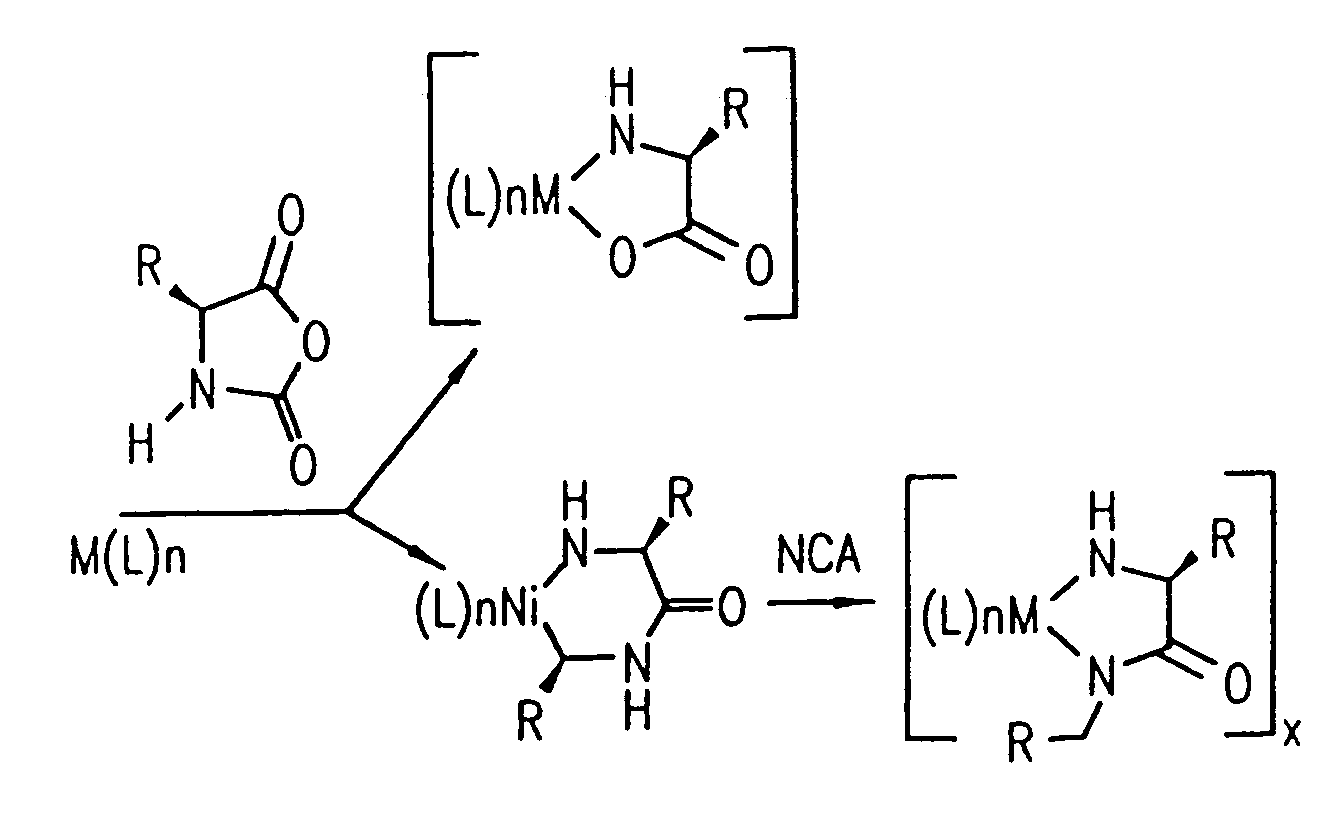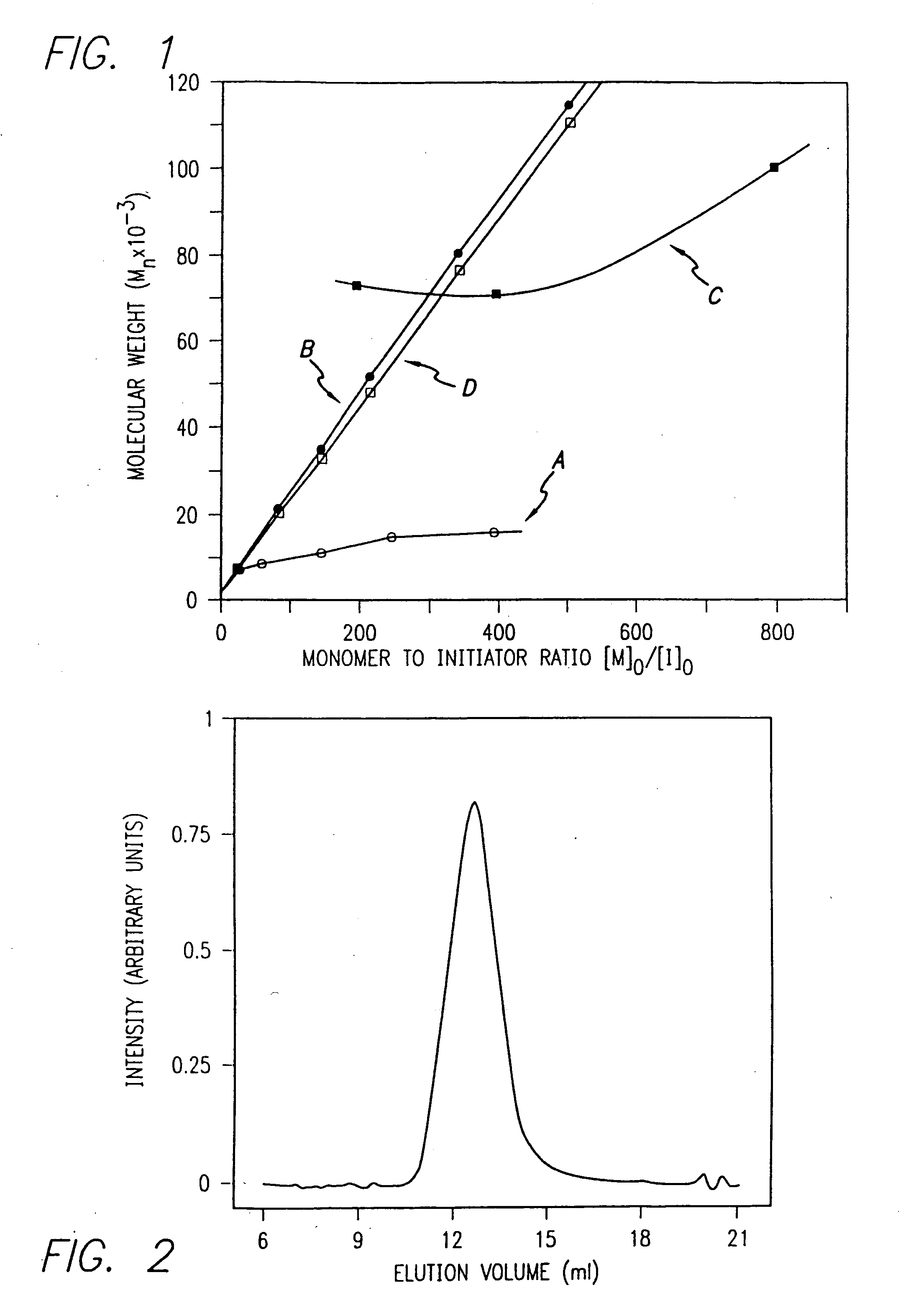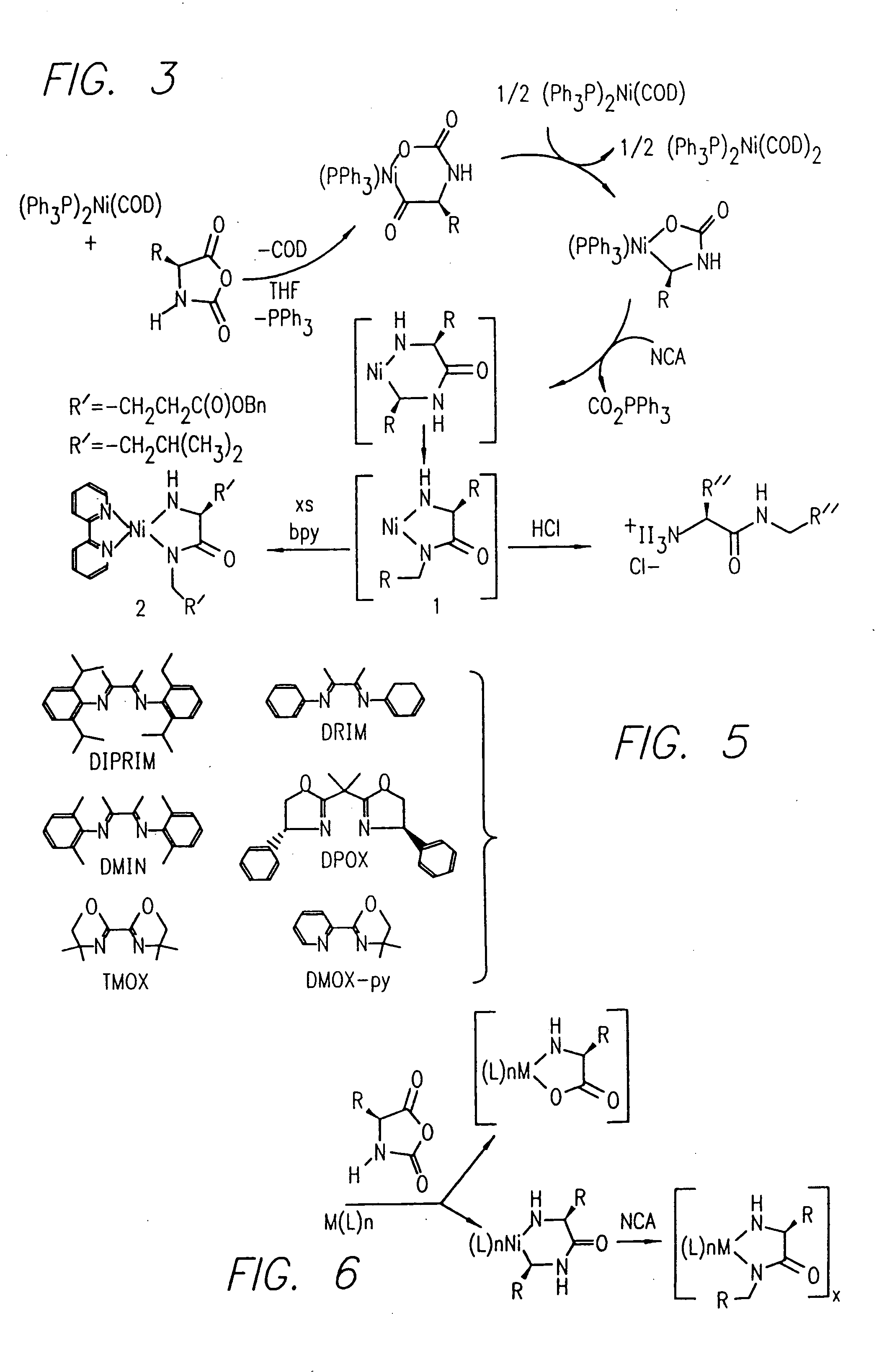Methods and compositions for controlled polypeptide synthesis
a polypeptide and polypeptide technology, applied in the direction of peptides, peptide/protein ingredients, immunoglobulins, etc., can solve the problems of inability to complete 100% of the reaction, inability to achieve 100% completion, and drastic reduction of the effective yield of desired products, so as to eliminate chain-breaking side reactions
- Summary
- Abstract
- Description
- Claims
- Application Information
AI Technical Summary
Benefits of technology
Problems solved by technology
Method used
Image
Examples
example 1
Methods Using Amino Acid Derived Metallacycles: Intermediates in Metal Mediated Polypeptide Synthesis
[0152]General Experimental Protocols and Reagents
[0153]Infrared spectra were recorded on a Perkin Elmer 1605 FTIR Spectrophotometer calibrated using polystyrene film. Tandem gel permeation chromatography / light scattering (GPC / LS) was performed on a Spectra Physics Isochrom liquid chromatograph pump equipped with a Wyatt DAWN DSP light scattering detector and Wyatt Optilab DSP. Separations were effected by 105 Å and 103 Å Phenomenex 5μ columns using 0.1M LiBr in DMF eluent at 60° C. Optical rotations were measured on a Perkin Elmer Model 141 Polarimeter using a 1 mL volume cell (1 dm length). NMR spectra and bulk magnetic susceptibility measurements (Evans method) were measured on a Bruker AMX 500 MHz spectrometer. [D. F. Evans, J. Chem. Soc., 2003-2009 (1959); J. K. Becconsal, J. Mol. Phys., 15:129-135 (1968)]. C, H, N elemental analyses were performed by the Microanalytical Laborato...
example 2
Initiators for Chain-End Functionalized Polypeptides and Block Copolypeptides
[0174]Nα-allyloxycarbonyl-amino acid amides were reacted with zerovalent nickel complexes LNi(1,5-cyclooctadiene) (L=2,2′-bipyridine (bpy), 1,10-phenanthroline (phen), 1,2-bis(dimethylphosphino)ethane (dmpe), and 1,2-bis(diethylphosphino)ethane (depe)), to yield amido-amidate metallacycles of the general formula: LNiNHC(R′)HC(O)NR″. These complexes were found to initiate polymerization of α-amino acid-N-carboxyanhydrides (NCAs) yielding polypeptides with defined molecular weights, narrow molecular weight distributions, and with quantitative incorporation of the initiating ligand as an end-group. A napthyl substituent was incorporated as a fluorescent end-group to demonstrate the feasibility of this methodology.
[0175]General Experimental Protocols and Reagents
[0176]Infrared spectra were recorded on a Perkin Elmer 1605 FTIR Spectrophotometer calibrated using polystyrene film. Tandem gel permeation chromatogra...
example 3
Facile Synthesis of Block Copolypeptides of Defined Architecture
[0193]General Experimental Protocols and Reagents
[0194]Infrared spectra were recorded on a Perkin Elmer 1605 FTIR Spectrophotometer calibrated using polystyrene film. Tandem gel permeation chromatography / light scattering (GPC / LS) was performed on a Spectra Physics Isochrom liquid chromatograph pump equipped with a Wyatt DAWN DSP light scattering detector and Wyatt Optilab DSP. Separations were effected by 105 Å and 103 Å Phenomenex 5μ columns using 0.1M LiBr in DMF at 60° C. as eluent. Optical rotations were measured on a Perkin Elmer Model 141 Polarimeter using a 1 mL volume cell (1 dm length). NMR spectra were measured on a Bruker AMX 500 MHz spectrometer. Chemicals were obtained from commercial suppliers and used without purification unless otherwise stated. (COD)2Ni was obtained from Strem Chemical Co., and 13C1-L-leucine and 13C-phosgene were obtained from Cambridge Isotope Labs. g-Benzyl-L-glutamate NCA were prepa...
PUM
| Property | Measurement | Unit |
|---|---|---|
| diameter | aaaaa | aaaaa |
| Mn | aaaaa | aaaaa |
| polydispersity index | aaaaa | aaaaa |
Abstract
Description
Claims
Application Information
 Login to View More
Login to View More - R&D
- Intellectual Property
- Life Sciences
- Materials
- Tech Scout
- Unparalleled Data Quality
- Higher Quality Content
- 60% Fewer Hallucinations
Browse by: Latest US Patents, China's latest patents, Technical Efficacy Thesaurus, Application Domain, Technology Topic, Popular Technical Reports.
© 2025 PatSnap. All rights reserved.Legal|Privacy policy|Modern Slavery Act Transparency Statement|Sitemap|About US| Contact US: help@patsnap.com



